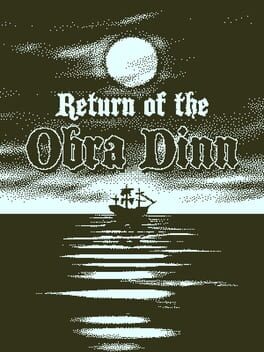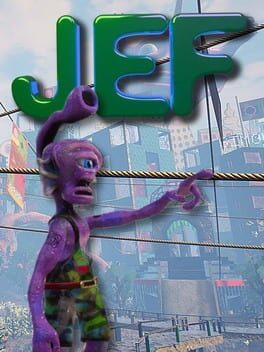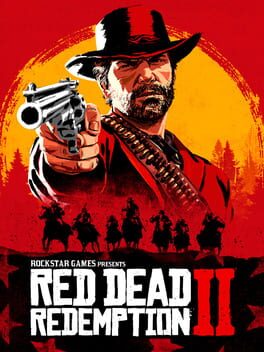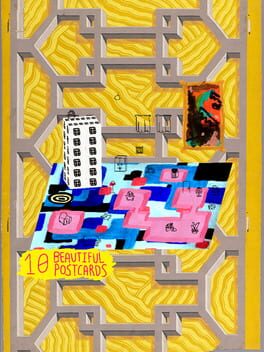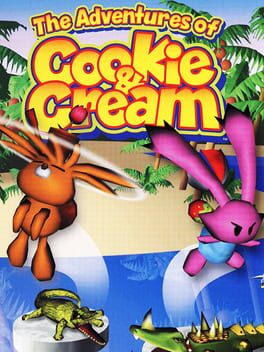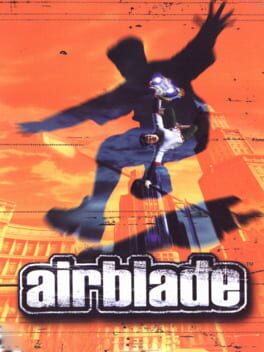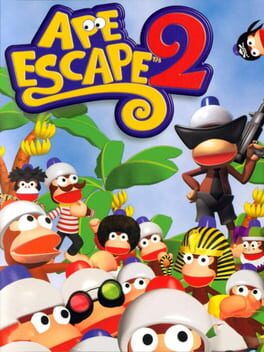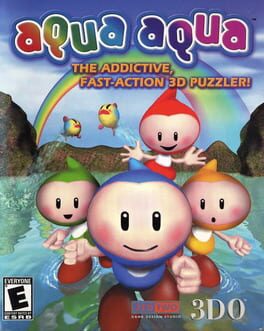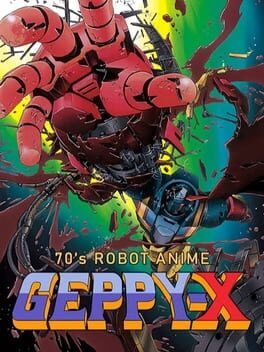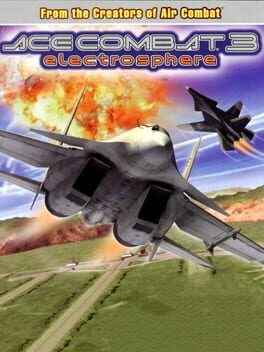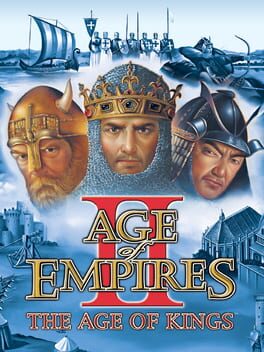Miniike
112 reviews liked by Miniike
Resident Evil 4
2023
rating based on my experience up to chapter 8...which is where i'm putting it down because i feel like i've gotten everything i wanted from the game (and borrowed it anyway)...up to this point, and with no context of any other games in the series, i feel that as a pure survival combat experience this is well-designed and fluid...nothing revelatory but certainly fun and even without playing the original game the mid 00s vibe is palpable and charming
but the primary takeaway, and most valuable to my overall gaming and art journey, is that i'm stopping because i don't really enjoy killing hordes of weird creatures over and over again, however engaging it may be...feels a bit soul-draining and i prefer killing to be a bit more abstracted or light-hearted (or otherwise discouraged i guess)...not that i'm a pacifist (especially in the context of fiction because it aint real) but it's just a taste i've come to accept...i can do this shit but maybe this genre is outside of what i want out of immersive art
that being said, i'm still gonna try other things in what i assume are a similar mode (Bloodborne etc)...but overall i'll be prioritizing other stuff for a while to see where that directs my taste :)
but the primary takeaway, and most valuable to my overall gaming and art journey, is that i'm stopping because i don't really enjoy killing hordes of weird creatures over and over again, however engaging it may be...feels a bit soul-draining and i prefer killing to be a bit more abstracted or light-hearted (or otherwise discouraged i guess)...not that i'm a pacifist (especially in the context of fiction because it aint real) but it's just a taste i've come to accept...i can do this shit but maybe this genre is outside of what i want out of immersive art
that being said, i'm still gonna try other things in what i assume are a similar mode (Bloodborne etc)...but overall i'll be prioritizing other stuff for a while to see where that directs my taste :)
A genuinely magical game that’s kept me thinking about it and will continue having this grip on me for quite some time. Games that utilise the medium to such an extent that their identity hinges on the interactive element being present are some of the most fun ones to let sit with you, and this is one of my favourite instances of it. Return of the Obra Dinn is one of the greatest mystery games I’ve played and a lot of this is owed to the structure of the game, forgoing crafting a mystery specifically designed to surprise the player with its various twists and instead laying it all out bare and forcing you to pick everything apart to fully grasp the finer details of things. The mystery and story themselves are not the important aspects here, it’s just trying to immerse you into the role of a detective without any handholding beyond the bare essentials, and it does so perfectly.
Return of the Obra Dinn is a mystery/puzzle game that revolves around incomplete information and assumption, often leaving little to no definitive evidence and forcing you to jump all around to place with increasingly tenuous lines of logic as you feel yourself going insane. It was quite funny taking a step back after combing through a few scenes in excruciating detail and just thinking “wow, this is deranged” but that’s just how the game is. The player is likely to find all of the story beats of the game rather early on without knowing the fates of the vast majority of the cast, and then the rest of the game boils down to going between the relevant scenes in the game to try and figure out how to deduce some of them, which would seem like an experience that would feel stagnant very quickly, but is saved due to the sense of progression that will take place despite it all just looking like cleanup at first. The progression gates in this game are entirely dependent on and driven by the player, hinging on multiple big realisations on how they need to approach their investigations. This culminates in a deeply rewarding loop of thinking that you’ve hit the logical endpoint of what you achieve on your own, before realising a new detail that leads you down a new line of logic to discover someone, and then applying this newfound understanding of how to figure something out to other characters. A contributing factor to how this is so successful is due to the plethora of approaches that you’re expected to work out, sometimes really being as simple but uncertain feeling as “this guy hangs around this other guy a lot, they’re probably in the same field”.
The way that your answers are confirmed is a clever way of limiting the ability to brute force a lot of puzzle answers as well, since you’ve only got confirmation on whether you’re correct or not once you have 3 correct answers simultaneously written down. While some amount of guesswork was an expected element of this game’s design, by structuring it like this, players are still forced to confidently deduce 2 other people before they can start taking real shots in the dark with incomplete assumptions, solving a problem I’ve seen time and time again in deduction games where people will often resort to total guesswork the moment they’re met with some confusion and uncertainty. The presentation goes a long way in tying everything together as well, being visually striking while having the effect of being simple enough to make the important details easier to pinpoint while simultaneously obscuring everything just enough to invite uncertainty into every observation. I adore whenever a game can keep me thinking for so long after I’m done with it, and I love it even more when it does so through something as esoteric as it is here. Total masterpiece, something new to add to my list of favourites.
Return of the Obra Dinn is a mystery/puzzle game that revolves around incomplete information and assumption, often leaving little to no definitive evidence and forcing you to jump all around to place with increasingly tenuous lines of logic as you feel yourself going insane. It was quite funny taking a step back after combing through a few scenes in excruciating detail and just thinking “wow, this is deranged” but that’s just how the game is. The player is likely to find all of the story beats of the game rather early on without knowing the fates of the vast majority of the cast, and then the rest of the game boils down to going between the relevant scenes in the game to try and figure out how to deduce some of them, which would seem like an experience that would feel stagnant very quickly, but is saved due to the sense of progression that will take place despite it all just looking like cleanup at first. The progression gates in this game are entirely dependent on and driven by the player, hinging on multiple big realisations on how they need to approach their investigations. This culminates in a deeply rewarding loop of thinking that you’ve hit the logical endpoint of what you achieve on your own, before realising a new detail that leads you down a new line of logic to discover someone, and then applying this newfound understanding of how to figure something out to other characters. A contributing factor to how this is so successful is due to the plethora of approaches that you’re expected to work out, sometimes really being as simple but uncertain feeling as “this guy hangs around this other guy a lot, they’re probably in the same field”.
The way that your answers are confirmed is a clever way of limiting the ability to brute force a lot of puzzle answers as well, since you’ve only got confirmation on whether you’re correct or not once you have 3 correct answers simultaneously written down. While some amount of guesswork was an expected element of this game’s design, by structuring it like this, players are still forced to confidently deduce 2 other people before they can start taking real shots in the dark with incomplete assumptions, solving a problem I’ve seen time and time again in deduction games where people will often resort to total guesswork the moment they’re met with some confusion and uncertainty. The presentation goes a long way in tying everything together as well, being visually striking while having the effect of being simple enough to make the important details easier to pinpoint while simultaneously obscuring everything just enough to invite uncertainty into every observation. I adore whenever a game can keep me thinking for so long after I’m done with it, and I love it even more when it does so through something as esoteric as it is here. Total masterpiece, something new to add to my list of favourites.
Balan Wonderworld
2021
If there was one typically maligned game that I had expected to get more out of than the average person, it would’ve been this one, after all, it’s a colourful 3D platformer with a lot of weird ideas thrown into the mix. The amount of discussion surrounding such games to make them purely out as these punching bags to point and laugh at in bad faith is a tiresome thing to witness time and time again and my hatred for such a mindset is ultimately one of the many reasons why I strive to approach art with optimism. Unfortunately, while I definitely think I have a bit more appreciation for this than I often see, there’s a bit too much about Balan Wonderworld that is downright baffling to me, which when combined with how utterly milquetoast other elements of the game are, makes for a very stilted experience that never fully achieves the grander heights that it’s going for.
I think that the one button control scheme that the game goes for is one of the biggest missed opportunities here, as a lot of the groundwork for something really cool is in place, but the level design simply isn’t strong enough to accommodate for the weird ideas in play. There are over 60 costumes in the game, and due to the simplistic controls, each of these will only have one function, with an occasional 2nd one that will be activated in a less conventional way, and unfortunately, jumping counts as a function, so in this platformer game, you’ll be in situations at times where you’re unable to jump. This isn’t as inherently bad as it may seem, but the level design doesn’t seem to be thoughtfully designed around the potential limitations that the player will face. Another aspect that doesn’t help is that even though there are so many costumes with a lot of different effects, a solid chunk of these exist to interact in a very lock and key way with the environment, having only one specific use that’s blatantly stated, with no way of utilising it in any other ways. This results in a lot of costumes feeling extremely underwhelming to unlock, as you know that the only thing it’ll be good for is to open the paths in specifically designated areas, making it feel functionally worthless and boring in any other scenario.
Adding to the frustration is that getting hit a single time will make you entirely lose the costume you’re wearing, forcing you to go and recollect it if you want to use it again. This doesn’t really do anything beyond add a layer of tedium to it all, since it’s not like it even returns to an inventory or anything, it’s just gone. This feeds back into the frustration with not being able to consistently jump, depending on your costume loadout, since taking a hit can straight up leave you in a situation where you need to backtrack and grab another costume since you can’t progress otherwise. Despite my issues however, there’s definitely something here with the idea in its current form, it’s offbeat for sure, but not a totally lost cause either. Rather than crafting each stage to feel like the most barebones, basic 3D platformer stuff out there, the game would work a whole lot better if there were a bunch of different, branching paths within the stages that took advantage of specific abilities, or at least multiple ways to reach the same location so as to not completely lock you out of progression by getting hit once and still contribute to a sense of exploration, as a collectathon should feature in some capacity. This would lead to a more varied set of obstacles to tackle and would also be a great way of more deftly incorporating some hidden collectibles, having multiple ways to approach a situation, with each of them rewarding you for doing so.
This would also tie into the boss fights of the game much more smoothly to create a more cohesive experience on the whole, due to how they function and reward the player. While these fights are very simple for the most part, they’re also conceptually my favourite element of the game for how they’re able to work both as something very easy and approachable for the kids that are going to play the game, while still requiring a bit of thought for those who want to collect everything. Each boss has 3 different opportunities to hit it in its attack patterns, often requiring different costumes to hit its weak points, and for each way you utilise in the battle, you’re awarded one additional Balan statue, the collectible of the game. This shifts each encounter into a bit of a puzzle, since some of the methods of hurting the boss are pretty tricky to work out, and it adds a lot of nuance and intrigue to what usually are the blandest, or at least most simplistic elements of a platformer in this vein.
Despite the stages also not utilising it super well in a lot of cases, I also quite like the game’s artstyle, it’s very colourful and cute and absolutely shines in the boss fights especially, along with the character designs of Balan and Lance, further making me wish that a lot of other elements of the game were more fleshed out and vibrant. The one exception to my distaste over the fact that everything looks very “gamey” in the stages, for lack of a better term, is that it contributes to a certain vibe whenever you have the snow fairy costume that lets you completely break levels and skip large chunks of them, evoking a very similar feeling of exploring the boundaries of a game in the way that a lot of my favourite platformers hone in on. Hiding more stuff like this in especially out of reach and unconventional locations is another way that I think I’d have enjoyed the game more, it’s a very specific brand of weirdness that appeals to me greatly, and this game has all the tools to be able to accomplish such things with a few tweaks.
The one element of this game that I cannot really defend or appreciate in any major capacity is the Balan Bout however, these things SUCK in a way that very few game mechanics ever have to me. Having to do a QTE whenever you grab one of the Balan hats is tedious beyond belief, with a lot of the sequences that play out being over 2 minutes long and just, repeating sequences you’ve seen many times before, without any way to speed up or skip at all. The fact that you need to do these perfectly in order to get the Balan statue from them is a pain and a half as well, especially with certain telegraphs feeling borderline impossible to hit, and the fact that if you don’t get a perfect, the hat disappears and makes you beat the boss of the world if you want to respawn it, making each attempt at it an ordeal to get to. These made me genuinely mad and never stopped completely baffling me each time I had to think about them.
Overall, I liked Balan Wonderworld a bit less than I was hoping, the stages were dull and felt almost entirely lacking in progression, making the game feel stagnant, the weird mechanics were kinda just thrown into an otherwise extremely standard game, and the Balan Bouts are atrocious. With that said, I think the thing that disappoints me most is that there are elements of intrigue to be found here with how off kilter so many ideas truly are, even within the bits that I don’t really like in their current state. I love when a game is packed to the brim with idiosyncrasies, it just so happens that in this case, those idiosyncrasies do not gel well with the exceptionally standard foundation that the game is built around, it tries to feel dreamlike, but just ends up being either frustrating or pedestrian.
I think that the one button control scheme that the game goes for is one of the biggest missed opportunities here, as a lot of the groundwork for something really cool is in place, but the level design simply isn’t strong enough to accommodate for the weird ideas in play. There are over 60 costumes in the game, and due to the simplistic controls, each of these will only have one function, with an occasional 2nd one that will be activated in a less conventional way, and unfortunately, jumping counts as a function, so in this platformer game, you’ll be in situations at times where you’re unable to jump. This isn’t as inherently bad as it may seem, but the level design doesn’t seem to be thoughtfully designed around the potential limitations that the player will face. Another aspect that doesn’t help is that even though there are so many costumes with a lot of different effects, a solid chunk of these exist to interact in a very lock and key way with the environment, having only one specific use that’s blatantly stated, with no way of utilising it in any other ways. This results in a lot of costumes feeling extremely underwhelming to unlock, as you know that the only thing it’ll be good for is to open the paths in specifically designated areas, making it feel functionally worthless and boring in any other scenario.
Adding to the frustration is that getting hit a single time will make you entirely lose the costume you’re wearing, forcing you to go and recollect it if you want to use it again. This doesn’t really do anything beyond add a layer of tedium to it all, since it’s not like it even returns to an inventory or anything, it’s just gone. This feeds back into the frustration with not being able to consistently jump, depending on your costume loadout, since taking a hit can straight up leave you in a situation where you need to backtrack and grab another costume since you can’t progress otherwise. Despite my issues however, there’s definitely something here with the idea in its current form, it’s offbeat for sure, but not a totally lost cause either. Rather than crafting each stage to feel like the most barebones, basic 3D platformer stuff out there, the game would work a whole lot better if there were a bunch of different, branching paths within the stages that took advantage of specific abilities, or at least multiple ways to reach the same location so as to not completely lock you out of progression by getting hit once and still contribute to a sense of exploration, as a collectathon should feature in some capacity. This would lead to a more varied set of obstacles to tackle and would also be a great way of more deftly incorporating some hidden collectibles, having multiple ways to approach a situation, with each of them rewarding you for doing so.
This would also tie into the boss fights of the game much more smoothly to create a more cohesive experience on the whole, due to how they function and reward the player. While these fights are very simple for the most part, they’re also conceptually my favourite element of the game for how they’re able to work both as something very easy and approachable for the kids that are going to play the game, while still requiring a bit of thought for those who want to collect everything. Each boss has 3 different opportunities to hit it in its attack patterns, often requiring different costumes to hit its weak points, and for each way you utilise in the battle, you’re awarded one additional Balan statue, the collectible of the game. This shifts each encounter into a bit of a puzzle, since some of the methods of hurting the boss are pretty tricky to work out, and it adds a lot of nuance and intrigue to what usually are the blandest, or at least most simplistic elements of a platformer in this vein.
Despite the stages also not utilising it super well in a lot of cases, I also quite like the game’s artstyle, it’s very colourful and cute and absolutely shines in the boss fights especially, along with the character designs of Balan and Lance, further making me wish that a lot of other elements of the game were more fleshed out and vibrant. The one exception to my distaste over the fact that everything looks very “gamey” in the stages, for lack of a better term, is that it contributes to a certain vibe whenever you have the snow fairy costume that lets you completely break levels and skip large chunks of them, evoking a very similar feeling of exploring the boundaries of a game in the way that a lot of my favourite platformers hone in on. Hiding more stuff like this in especially out of reach and unconventional locations is another way that I think I’d have enjoyed the game more, it’s a very specific brand of weirdness that appeals to me greatly, and this game has all the tools to be able to accomplish such things with a few tweaks.
The one element of this game that I cannot really defend or appreciate in any major capacity is the Balan Bout however, these things SUCK in a way that very few game mechanics ever have to me. Having to do a QTE whenever you grab one of the Balan hats is tedious beyond belief, with a lot of the sequences that play out being over 2 minutes long and just, repeating sequences you’ve seen many times before, without any way to speed up or skip at all. The fact that you need to do these perfectly in order to get the Balan statue from them is a pain and a half as well, especially with certain telegraphs feeling borderline impossible to hit, and the fact that if you don’t get a perfect, the hat disappears and makes you beat the boss of the world if you want to respawn it, making each attempt at it an ordeal to get to. These made me genuinely mad and never stopped completely baffling me each time I had to think about them.
Overall, I liked Balan Wonderworld a bit less than I was hoping, the stages were dull and felt almost entirely lacking in progression, making the game feel stagnant, the weird mechanics were kinda just thrown into an otherwise extremely standard game, and the Balan Bouts are atrocious. With that said, I think the thing that disappoints me most is that there are elements of intrigue to be found here with how off kilter so many ideas truly are, even within the bits that I don’t really like in their current state. I love when a game is packed to the brim with idiosyncrasies, it just so happens that in this case, those idiosyncrasies do not gel well with the exceptionally standard foundation that the game is built around, it tries to feel dreamlike, but just ends up being either frustrating or pedestrian.
Dark Souls III
2016
Was pleasantly surprised how satisfying and fulfilling this was. It can't help but be a retread, both thematically and mechanically, but it manages a lot of mystery anyway and has some of the series's most stark and striking areas. I think the sheer weight of the amount of times the fire has been lit gives the game a pretty stark existentialism. My least favorite of these, but still pretty great.
The idea of making a CD-i inspired pseudo-parody game like this is the kind of thing that I could've seen being pretty insufferable in the wrong hands. The legacy of these games largely boils down to its cutscenes and its "so bad its good" nature, but basing an entire game around this not only would've made for something that was barely a game, but also something profoundly annoying and submerged in tedious ironic humour. Arzette being developed by the same person who made the PC remasters of those games puts the game in a much more favourable position however, with a very clear understanding on the intricacies of the game as a whole being put on display, as well as coming across as a far more earnest tribute as opposed to pointing and laughing.
Arzette understands the incongruencies of its inspirations well, but also digs further down to see the good that game had as well, expanding upon them to create versions of these concepts that are more palatable, rather than getting rid of them. In this regard, saying that this game is just "CD-i but good" misses out on analysing the way that the positive qualities here are largely lifted from them, with the positive aspects simply highlighted and some of the elements obscuring these qualities being lessened, wanting to craft a similar sense of identity. One of the biggest ways I see this working is how boss fights are handled in this, with all of them functioning in very similar ways to the CD-i titles, but tweaked to still feel more like actual boss fights. The strategies for all of these is extremely simple, with them all either being countered either by being in certain locations where they cannot reach you, or countering all of their attacks with a single item, but these fights still go on for a bit, requiring multiple hits and the like, even though it's always entirely trivial. This riffs nicely off of the idea of "the bosses in these games get hit with an item once and go poof", by keeping the spirit of this alive while making it feel just a tad less anticlimactic, still feeling like an actual confrontation to some degree.
The other enjoyable aspects of the original games are also here in full force, with the gorgeous backgrounds and awesome, energetic music making the game an absolute treat presentation wise. It's also interesting to note that despite the backgrounds going for such a similar style, that there aren't any instances of it being hard to tell what is a platform and what isn't outside of a couple of instances that very clearly felt intentionally funny to me. The platforms themselves aren't highlighted or made overly visible or anything like that, it's just that the scenery is composed in such a way to make it feel immediately intuitive, making you feel fully immersed in traversing these painted landscapes.
The cutscenes are also delightful as well of course, as while they're not quite as wild with the constant character distortions and expressiveness of the smallest of details, the vibe is close enough and falls quite comfortably into its own style that runs very closely parallel, rather than entirely mimicking everything. The writing contains a bit of meta-humour but also largely feels like a nice bit of camp that's elevated by the cutscene style rather than focusing solely on making everything seem intentionally awkward and "bad". Even the animation itself tends to go for slightly different quirks to focus on, the biggest of which being that Arzette herself never seems to look quite the same in any 2 cutscenes, always shifting between a variety of incredibly similar, yet nonetheless different styles.
Really, really love what this game sets out to do and I think that it culminates in something that feels special in how earnest it is. I can't see many cases where this idea would've come to life in a satisfying way to me if basically anyone else had handled this project, but here it is, and it's an absolute blast :)
Arzette understands the incongruencies of its inspirations well, but also digs further down to see the good that game had as well, expanding upon them to create versions of these concepts that are more palatable, rather than getting rid of them. In this regard, saying that this game is just "CD-i but good" misses out on analysing the way that the positive qualities here are largely lifted from them, with the positive aspects simply highlighted and some of the elements obscuring these qualities being lessened, wanting to craft a similar sense of identity. One of the biggest ways I see this working is how boss fights are handled in this, with all of them functioning in very similar ways to the CD-i titles, but tweaked to still feel more like actual boss fights. The strategies for all of these is extremely simple, with them all either being countered either by being in certain locations where they cannot reach you, or countering all of their attacks with a single item, but these fights still go on for a bit, requiring multiple hits and the like, even though it's always entirely trivial. This riffs nicely off of the idea of "the bosses in these games get hit with an item once and go poof", by keeping the spirit of this alive while making it feel just a tad less anticlimactic, still feeling like an actual confrontation to some degree.
The other enjoyable aspects of the original games are also here in full force, with the gorgeous backgrounds and awesome, energetic music making the game an absolute treat presentation wise. It's also interesting to note that despite the backgrounds going for such a similar style, that there aren't any instances of it being hard to tell what is a platform and what isn't outside of a couple of instances that very clearly felt intentionally funny to me. The platforms themselves aren't highlighted or made overly visible or anything like that, it's just that the scenery is composed in such a way to make it feel immediately intuitive, making you feel fully immersed in traversing these painted landscapes.
The cutscenes are also delightful as well of course, as while they're not quite as wild with the constant character distortions and expressiveness of the smallest of details, the vibe is close enough and falls quite comfortably into its own style that runs very closely parallel, rather than entirely mimicking everything. The writing contains a bit of meta-humour but also largely feels like a nice bit of camp that's elevated by the cutscene style rather than focusing solely on making everything seem intentionally awkward and "bad". Even the animation itself tends to go for slightly different quirks to focus on, the biggest of which being that Arzette herself never seems to look quite the same in any 2 cutscenes, always shifting between a variety of incredibly similar, yet nonetheless different styles.
Really, really love what this game sets out to do and I think that it culminates in something that feels special in how earnest it is. I can't see many cases where this idea would've come to life in a satisfying way to me if basically anyone else had handled this project, but here it is, and it's an absolute blast :)
The Dog Island
2007
Edit: Maybe I'm full of shit. I want to play more of this now..
--
I liked dressing up my dog and the tonal clash of the happy Wii dog graphics and the heavy illness-focused slice of life story. Actually even sniffing around for new items was kinda fun. But the way the two fit together makes them both mutually feel heavier, and there's not really any substance to the sniffing out of items. I was kind of impressed they would put this story in a kids' game: by all means kids' games Should be about these things! But the gameplay otherwise was kind of infantilely simple.
--
I liked dressing up my dog and the tonal clash of the happy Wii dog graphics and the heavy illness-focused slice of life story. Actually even sniffing around for new items was kinda fun. But the way the two fit together makes them both mutually feel heavier, and there's not really any substance to the sniffing out of items. I was kind of impressed they would put this story in a kids' game: by all means kids' games Should be about these things! But the gameplay otherwise was kind of infantilely simple.
Pony Town
2016
Jef
2020
3 lists liked by Miniike

